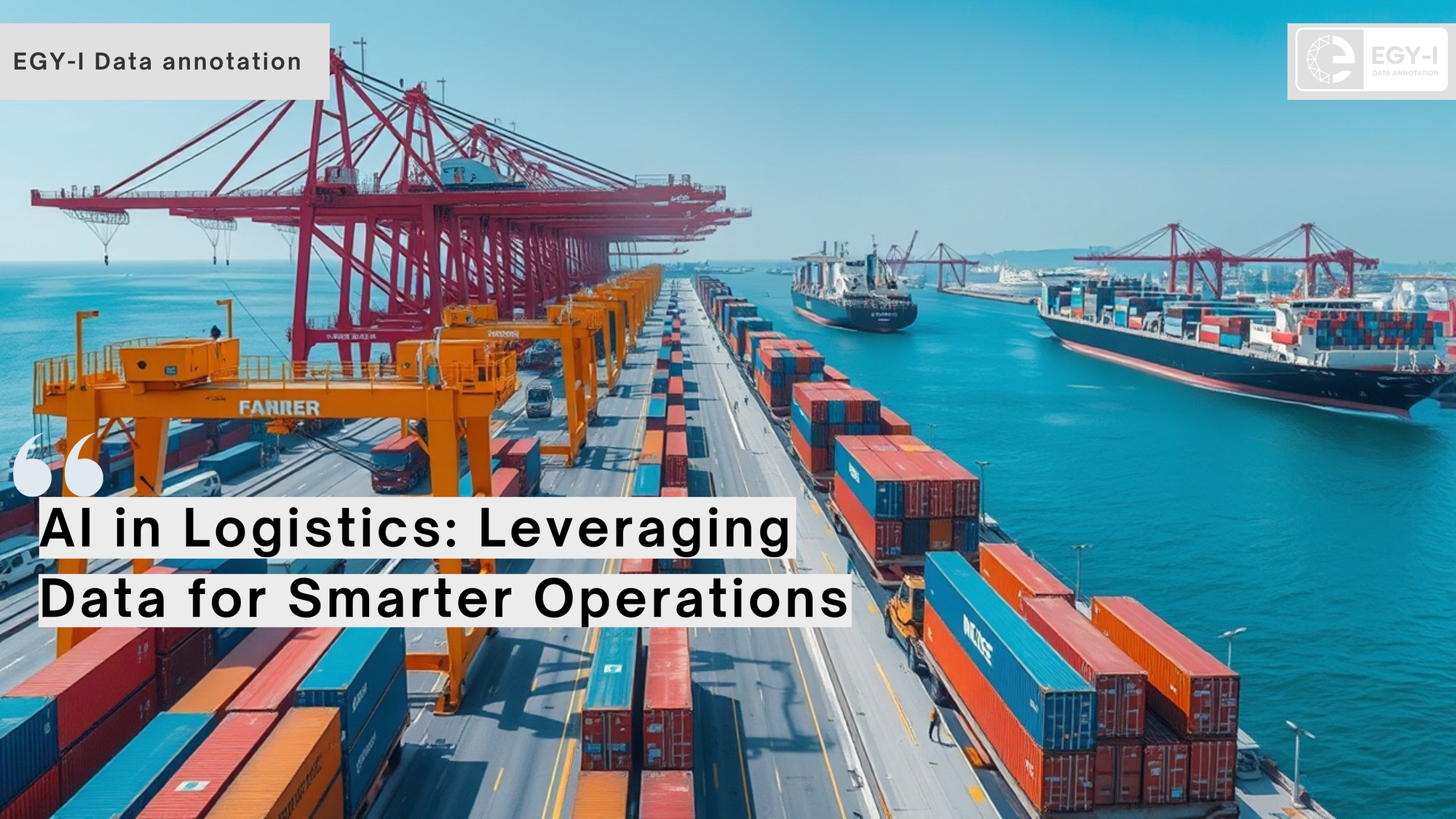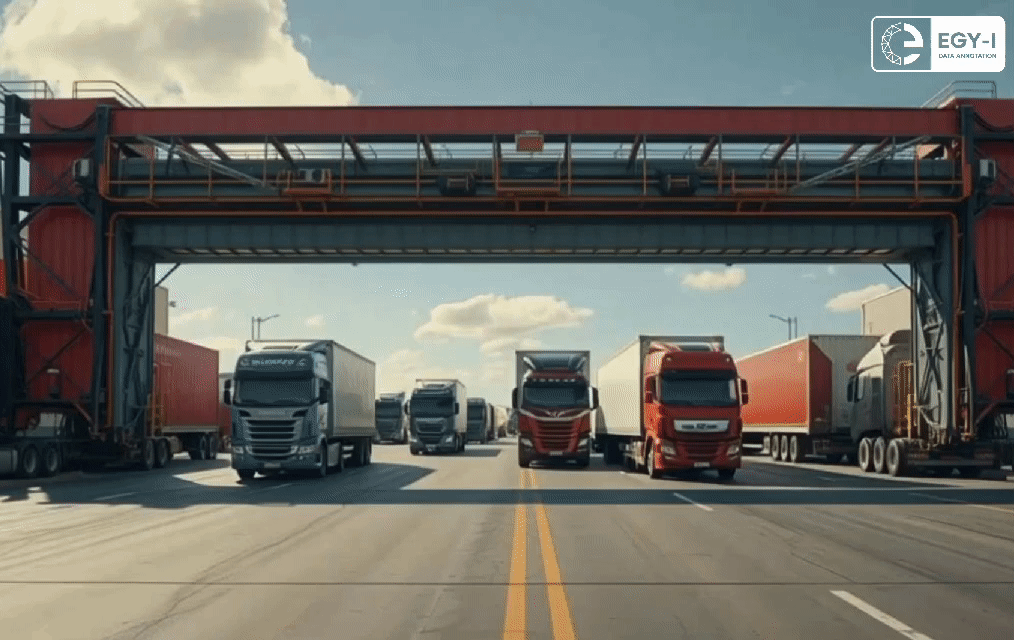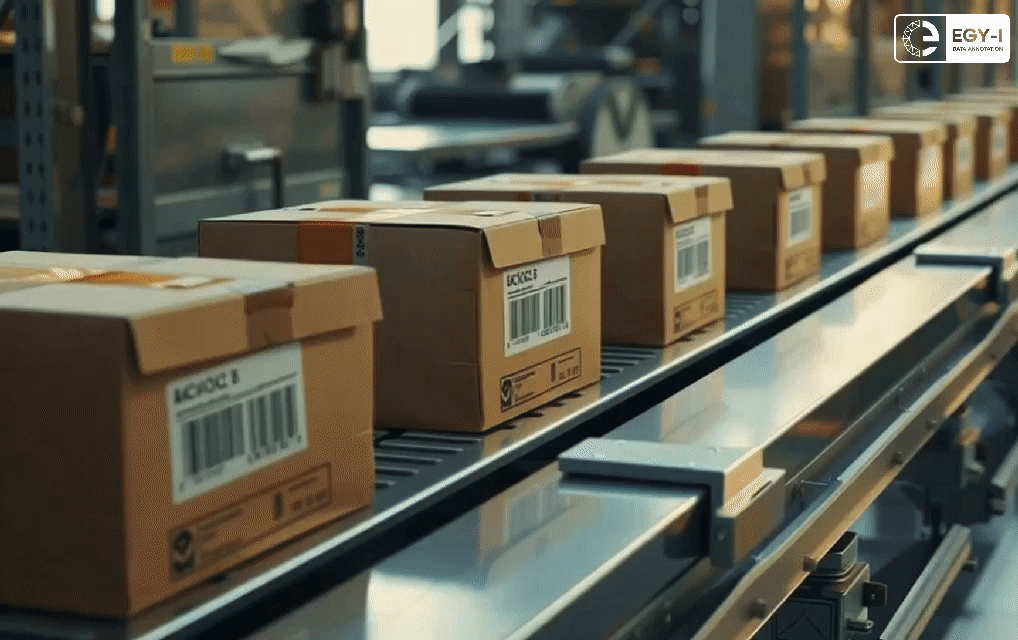AI in Logistics: Leveraging Data for Smarter Operations

The Role of AI in Revolutionizing the Logistics IndustryArtificial Intelligence (AI) has become a transformative force across various industries, and logistics is no exception. By optimizing operations, enhancing decision-making, and streamlining workflows, AI is revolutionizing the way logistics companies operate. A crucial component of developing effective AI solutions lies in high-quality data annotation services, which prepare raw data for model training. Here, we explore key areas where AI and data annotation intersect to drive innovation in the logistics sector.
1. Object Detection and Recognition
AI-powered object detection and recognition play a pivotal role in modern logistics. Annotating vehicles, containers, pallets, packages, and other logistics assets in images or videos ensures accurate identification and tracking throughout the supply chain. Data annotation services enable precise labeling of forklifts, trucks, drones, and warehouses in real-world operational settings, allowing AI models to enhance resource allocation and monitoring.

2. Text and Document Annotation
Logistics involves extensive paperwork, from invoices and shipping documents to bills of lading and customs forms. Annotating these documents facilitates the training of Optical Character Recognition (OCR) models, enabling AI systems to extract and process critical information efficiently. Accurate labeling of text and document fields ensures seamless automation in areas like customs compliance, billing, and inventory management.
3. Route and Pathway Annotation
Efficient route planning and navigation are vital for logistics success. By mapping and annotating delivery routes with Geographic Information Systems (GIS) data, AI models can optimize delivery schedules, reduce fuel consumption, and improve customer satisfaction. Annotation services further enhance autonomous vehicle navigation by identifying road signs, obstacles, and traffic signals, enabling safer and more reliable transportation.

4. Barcode and QR Code Annotation
In logistics, barcodes and QR codes are ubiquitous for tracking and managing shipments. Annotating these elements in images or video feeds enables AI systems to detect and process codes accurately, streamlining inventory management, package tracking, and automated scanning processes. This contributes to faster operations and reduced human error.

5. Activity Recognition
AI systems trained with annotated video data can recognize human activities such as loading, unloading, sorting, and packaging tasks. This capability enhances operational efficiency by identifying bottlenecks and improving workflows. Moreover, activity recognition supports worker safety by detecting hazards or deviations from safety protocols, fostering a more secure work environment.
6. Damage Detection and Quality Control
Ensuring the integrity of goods and materials is a top priority in logistics. Annotating images of damaged packages, containers, or vehicles enables AI models to assess damage accurately and recommend corrective actions. Additionally, labeling defects in packaging materials or identifying labeling errors ensures high-quality standards and minimizes customer complaints.
The Future of AI in Logistics
As the logistics industry continues to embrace AI, data annotation services will remain a cornerstone for developing robust and reliable models. By leveraging annotated datasets, logistics companies can unlock new efficiencies, improve customer experiences, and adapt to the demands of a rapidly evolving market. From autonomous vehicles and predictive analytics to intelligent warehouses and real-time tracking, AI is reshaping the logistics landscape, making operations smarter, safer, and more sustainable.


